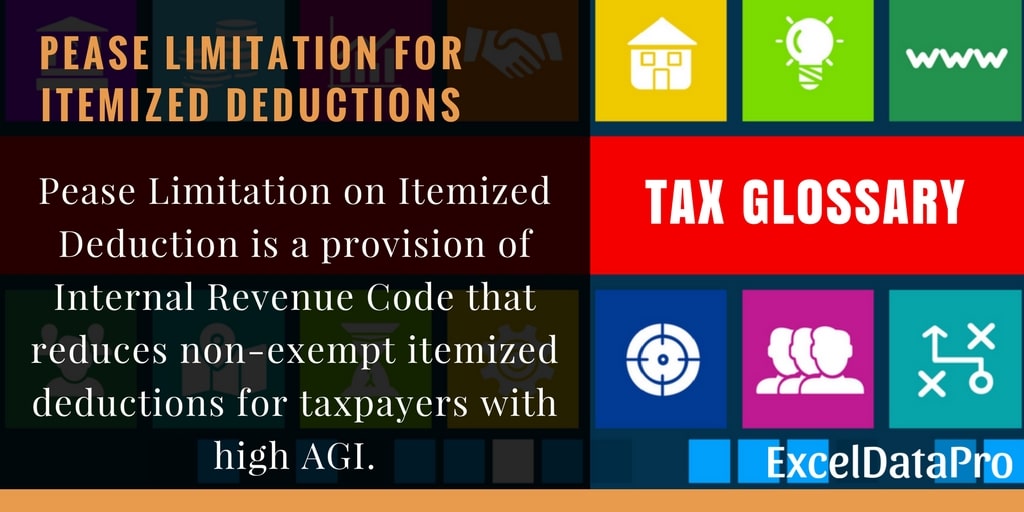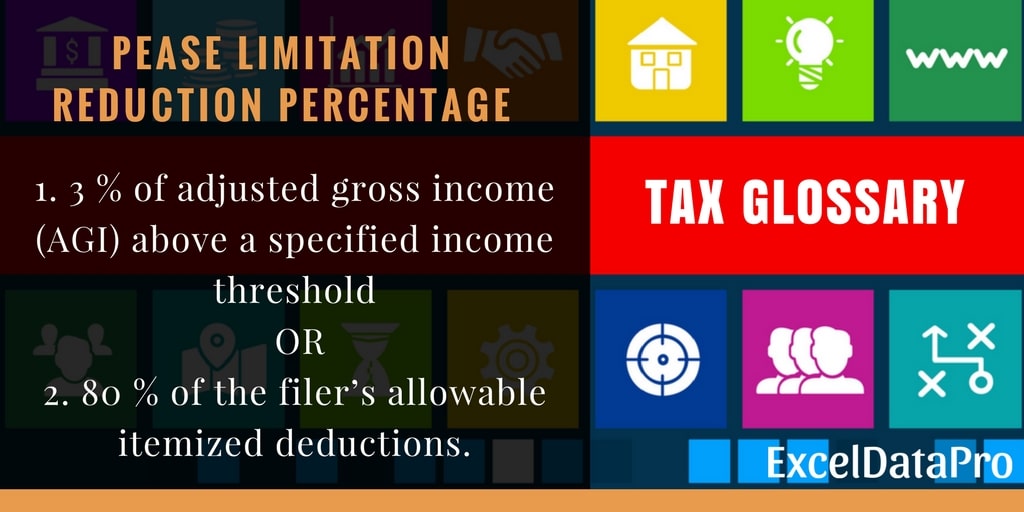
Pease Limitation on Itemized Deduction is a provision of Internal Revenue Code that reduces non-exempt itemized deductions for taxpayers with high AGI.
It was named after the Congressman Donald Pease who originally introduced it. The provision was enacted in 1991, under Section 68 of Internal Revenue Code.
Non-exempt itemized deductions are all the itemized deductions except the medical/dental expenses, investment interest expense, losses from casualty or theft, and gambling losses.
These reductions in itemized deductions were suspended for some time but reinstated in 2013. This provision is not applicable to estates and trusts.
Pease limitations apply to taxpayers at some income levels similar to PEP(Personal Exemption Phaseout).
Pease Limitation Reduction Percentage
Under the Pease Limitations, the itemized deductions of the high-income taxpayer are reduced by the lesser of:
- 3 % of adjusted gross income (AGI) above a specified income threshold or
- 80 % of the filer’s allowable itemized deductions.

To calculate your AGI, you can use our Adjusted Gross Income Calculator
AGI Thresholds for Pease Limitation the Year 2017
Single – $ 261,500
Married Filing Jointly – $ 313,800
Head Of Household – $ 287,650
Married Filing Separately – $ 156,900
Source: www.forbes.com
The thresholds limits are adjusted for inflation each year. The limits were less in previous years.
How to Calculate the Reduction Amount Of Itemized Deductions Under Pease Limitation?
Reduction Amount of Itemized Deduction = (AGI – Pease Threshold Amount) X 3 %

For Example:
If Mr. X is a single filer and has AGI of $ 550,000. For single filers, the Pease limitation is $ 261,500.
Thus, applying the above formula:
($ 550,000 – $ 261,500) X 3 % = 288500 X 3% = $ 8,655.
The 80% reduction applies to very few taxpayers. It is the 80% of total amount of Itemized deductions.
Conclusion
Generally, a taxpayer can use the total amount of itemized deductions claimed in Form 1040 under on Schedule A.
But under the Pease rule, most of his/her itemized deductions will be reduced by 3 % of the amount exceeding the AGI threshold and not be more than 80 % of total amount of itemized deductions.
You can download excel templates like Simple Tax Estimator, Itemized Deductions Calculator Traditional IRA Calculator, Roth IRA Calculator, and Income Statement Projection for easy calculations.
We thank our readers for liking, sharing and following us on different social media platforms.
If you have any queries please share in the comment section below. I will be more than happy to assist you.
Leave a Reply